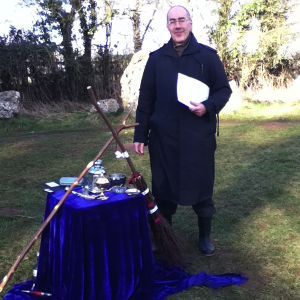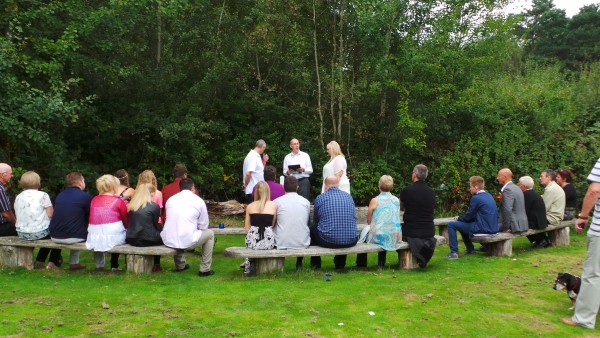It’s Spring, so the Summer Solstice is approaching. It’s a fantastic time to consider a solstice handfasting.
“A what?” I hear some of you say. “That does sound ‘unusual’!”
Allow me to elaborate.
If you don’t know, I am assuming that you are not a Druid or pagan, and if you are, please understand that I am writing this for the uninitiated. There are, however, different kinds of handfastings, so there’s no single answer to the question.
Example of a handfasting
Remember when Kate and Prince William got married about five years ago? Although it was a religious C of E ceremony, there was an element of handfasting in there when the couple took each other’s hands, which were covered by a ribbon.
It was a lovely simple ritual.
Now if you take that one step further and bind the two hands together, you have a handfasting.
Incidentally, this gives rise to the expression “tying the knot” and also “bonds of holy matrimony”.
Origins
This ceremony probably originated in Celtic times; however, it flourished in Europe until the mid 1700s. Up till then, few unions were sanctified in a religious building like a church. Rather, they were celebrated by a simple handfasting ceremony in which the two partners joined hands over the village anvil, in the fields or in the groves of trees. Today, we build upon this tradition.
The basics
The couple link and cross hands (normally right hand to right, and left to left) to form an infinity circle, symbolising the entirety of the universe as represented in their relationship. Then, with a cord or ribbon (or ribbons), the wrists are tied and knotted, in a lovers’ knot, to the accompaniment of a suitable text, to symbolise the joining together of the two people in lives and spirits.
The cords are then removed, normally by the couple – occasionally, with difficulty! – with the knots still in place. They will take the cord away with them and, ideally, it will remind them of their vows, should they hit a rocky patch.
Where does this happen?
Again, it depends, but many people prefer a quiet, open-air historic site that may be considered to be spiritual and preferably pagan – such as standing stones.
What about Stonehenge?
A civil celebrant, such as myself, can conduct a handfasting wedding or vow renewal in the Inner Circle at Stonehenge (normally around dawn or dusk), but this needs to be booked months in advance (and the Druids will have priority at the solstice). However, places like Avebury, Old Sarum or the Rollright Stones are wonderful and might serve the purpose every bit as well.

Michael raring to go at the Rollright Stones
I’m booked for a Stonehenge handfasting this June, but do have a chat (07931 538487) and see if we can sort something very special out for you for another time!

